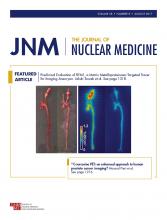TO THE EDITOR: The article by Siegel, Pennington, and Sacks, “Subjecting Radiologic Imaging to the Linear No-Threshold Hypothesis: A Non Sequitur of Non-Trivial Proportion,” is an important and timely contribution (1).
Because of the irrational fear of radiation fostered by the linear no-threshold hypothesis, patients forgo necessary medical examinations and scientific societies issue guidelines that actually may harm patients. Radioprotection at the hospital has become a nosocomial hazard, and the patients who are likely to suffer the most from this radiophobia are children and pregnant women.
Without any clear scientific rationale, aggressive policies of dose reduction are being implemented for pediatric imaging, especially for CT scans (2). It has been estimated that, because of excessive dose reduction, 1 in 20 pediatric abdominal CT scans may be nondiagnostic (3). Moreover, flagging any amount of dose as dangerous has the predictable effect of spreading radiophobia to the parents: more than 5% of emergency CT scans for children are refused by parents concerned about radiation risk (4).
Pregnant women are subjected to imaging protocols that would be deemed unethical if used for any other patient. According to the lung scintigraphy guidelines of the European Association of Nuclear Medicine and Molecular Imaging, pregnant women with suspected embolism should undergo a 2-d lung scan protocol, especially during the first trimester: a perfusion scan on the first day followed by a ventilation scan on the next day only if indicated (5). When evaluating this approach on 27 first-trimester pregnant women, Bajc et al. found that the ventilation scan could be avoided in only 14 of them. Among the 5 women who eventually were diagnosed with embolism, the diagnosis was postponed until the following day in 4 (6). The fact that official guidelines propose delaying the diagnosis of a life-threatening disease to avoid a fetal dose smaller than that received during a few hours of air travel is an egregious example of how modern radioprotection thinks inside a box. The goal of dose reduction is pursued single-mindedly regardless of scientific evidence, countervailing goals, side effects, and societal costs.
Footnotes
Published online Mar. 2, 2017.
- © 2017 by the Society of Nuclear Medicine and Molecular Imaging.







